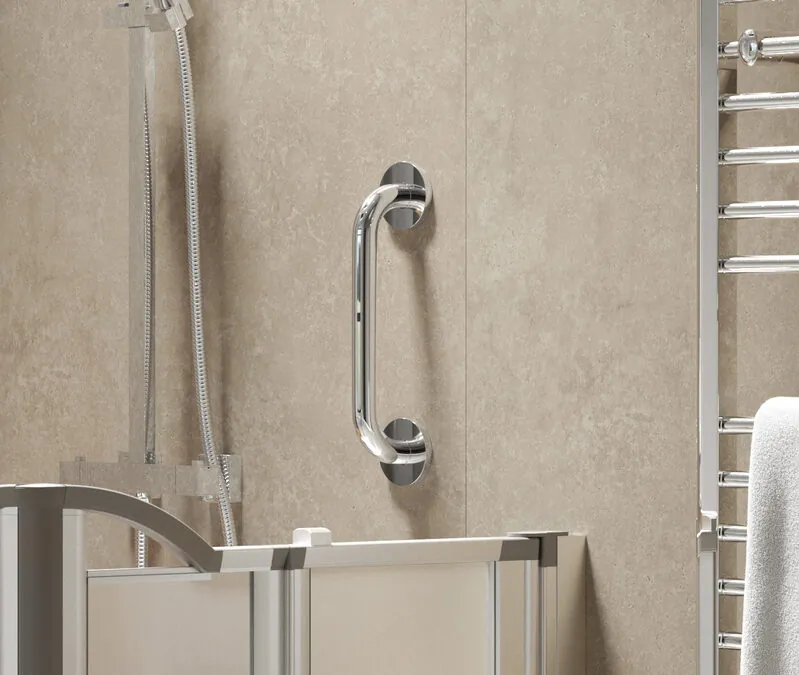If you or someone you know has balancing or mobility issues, a bathroom can be a hazardous place. Slippery tiles, tubs and showers become daunting because you fear falling and causing an injury.
Without bathroom aids, you or a loved one may not go to the bathroom independently, leading to a loss of autonomy and freedom.
In this article, we will cover the different types of bathroom aids for the elderly and disabled, their pros and cons, and which aid is best for you. By the end, you’ll have a clear idea of how to help yourself and others feel safe and comfortable in the bathroom.
Want a safer bathroom?
Simply complete our form to see a full range of bathing solutions & their key features. It takes no time at all!
- Low-level access showers
- Easy-access walk-in baths
- Bath Lift Chairs
- Non-Slip Bathing Floor Mat
- Bath Cushions
- Grab Rails
- Bath Seats and Boards
The benefits of bathing aids for independent living
Independent living is when a person can live without supervision or assistance. People may find independent living challenging for many reasons, particularly when it comes to the bathroom.
Examples include chronic fatigue, joint pain, physical disabilities or if they are healing from surgery. Bathroom aids assist these people in managing their condition without relying on someone else.
The best bathroom mobility aids for the elderly
There’s a wide range of bathroom aids that you can install permanently and temporarily in your home. Below are the best bathroom aids and how to discover which suits you or your loved ones.
1. Low-level access showers
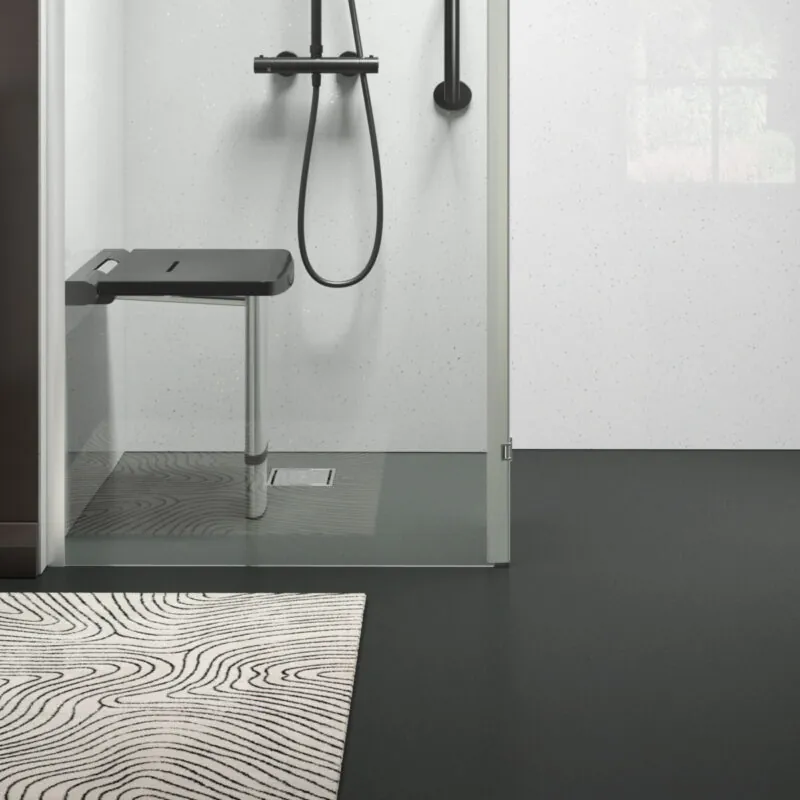
Easy-access showers have extremely low-level access shower trays with a lip of around which makes it easier to step in and out of the shower to help reduce the risk of tripping or falling.
Walk-in showers are a type of low-level access shower, that is built mainly for those who suffer mobility issues and disabilities, as they are more bespoke to those needs in comparison to commercial showers.
They are all slip-resistant and different mobility aids can be added to ensure that your bathing experience is safe and bespoke for your mobility needs.
Another option for low-level access showers would be wet rooms, which have no shower tray to step over and the floor is the same level throughout the room and can have the same non-slip resistance as Walk-in showers and similar mobility aids can be installed in it.
2. Easy-access walk-in baths
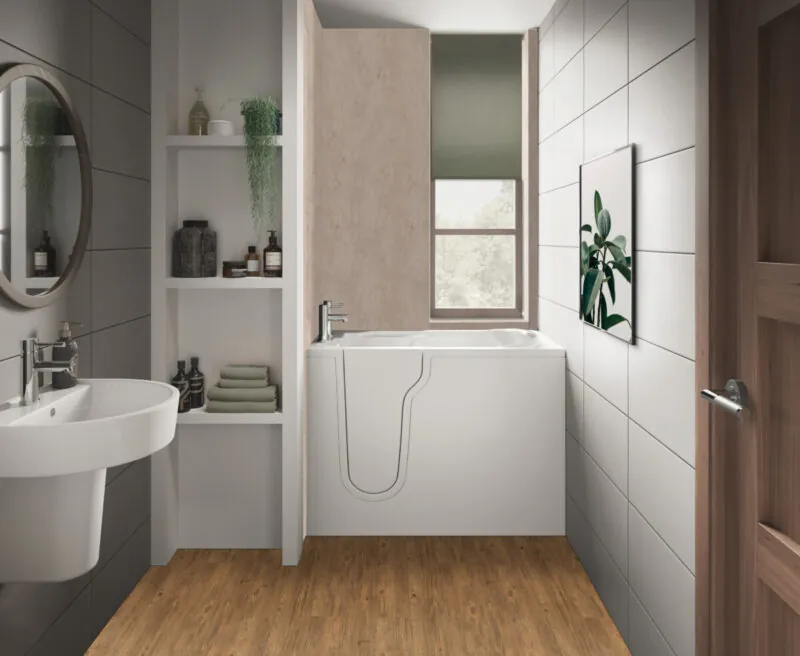
Those with mobility disabilities will struggle to use a commercial bathtub as they tend to find it hard to enter and exit the bath, as they do not have doors.
Walk-in baths, however, will have doors for easy access and will also tend to have bath seats for a more comfortable bathing experience.
This is an alternative to walk-in showers and wet rooms if you prefer to have a longer soak when bathing, with the added option to have a sit-down shower, as all walk-in baths come with showerheads you can pick up.
Some of the features walk-in baths come with are:
- Some of the lowest threshold doors available
- Thermostatically controlled taps to prevent scolding
- A range of luxurious options such as Spa therapy, or CosyWarm heated seat.
3. Bath Lift Chairs
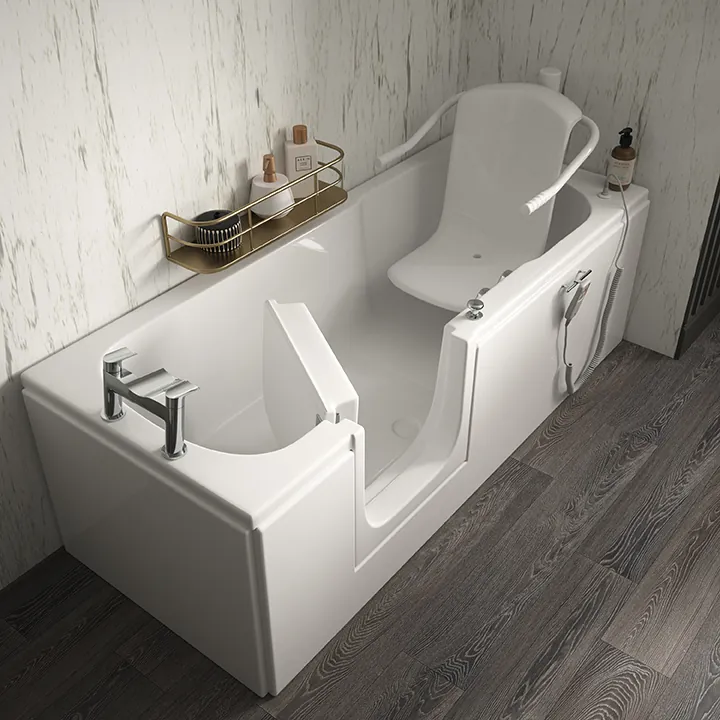
Bath lift chairs are electronically powered and fixed to the wall. A person sits in the chair and is lowered into the bathtub. You stay seated while washing before the powered hoist raises you out.
Who suits a bath lift chair?
A bath chair lift minimises movement for someone with little to no mobility. The chair is also helpful when recovering from an injury, as there’s no need to use your legs or arms for stability.
Pros of a chair lift
- Long-term – A powered chair lift is perfect for long-term living conditions. They can withstand wear and tear and won’t need regularly replacing.
- Easy to use – A person can independently control the chair to lift themselves in and out of the bath with ease.
- Minimal movement – Unlike rearranging a bath seat or bench, no additional manoeuvring is needed when sitting in the chair. This is great for anyone who finds movement painful or is physically limited.
Cons of a chair lift
- Can be pricey – Chair lifts are more expensive than aids such as bath stools or benches.
- Permanent – You need to install a chair lift into the wall, which may require permission if you are renting.
- Has a weight limit – Electric chairs can only take a certain amount of weight, so check the limit with the provider before purchasing.
4. Non-Slip Bathing Floor Mat
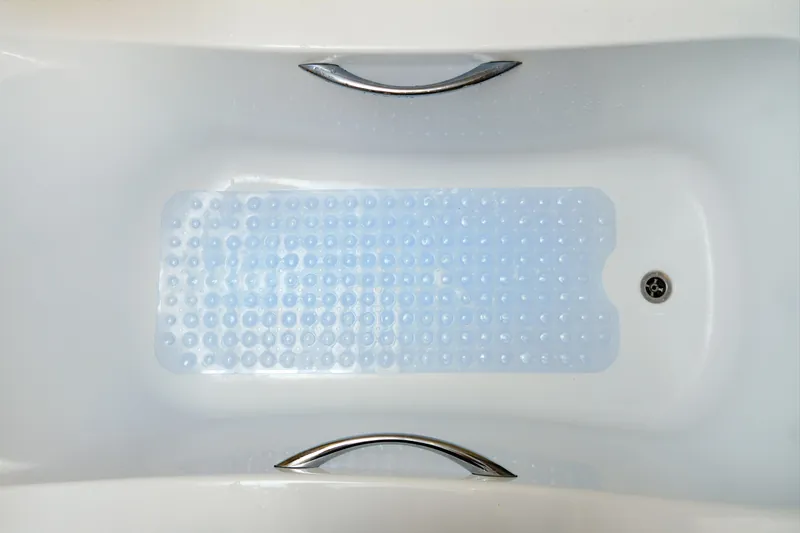
Non-slip bath mats provide grip and friction, minimising the risk of slips and falls. They are important in the bathroom because tiles and tub or shower floors get wet, which is particularly dangerous if you have balance issues.
Who suits a non-slip bathing floor mat?
You should have a non-slip mat, regardless of your age or ability, because of the slipperiness of bathroom floors. However, falling has more significant consequences for the elderly due to brittle bones. This can lead to greater injury, making non-slip mats an essential bath aid.
Pros of a non-slip bathing floor mat
- Budget-friendly – Bath mats are affordable bathroom aids, making them ideal if you have multiple bathrooms.
- No installation required – There is no installation process for a bath mat. Once purchased, place it in the desired area for a quick bathroom aid.
Cons of a non-slip bathing floor mat
- Only helps some mobility issues – Although bathmats are suitable for everyone, they do not always provide the level of support some people need. For example, a person may also require a grab rail for stability.
- Doesn’t help with manoeuvring – A bathmat does provide grip. However, people with chronic fatigue, joint pain, or trouble balancing will need extra bathroom aids for movement.
5. Bath Cushions
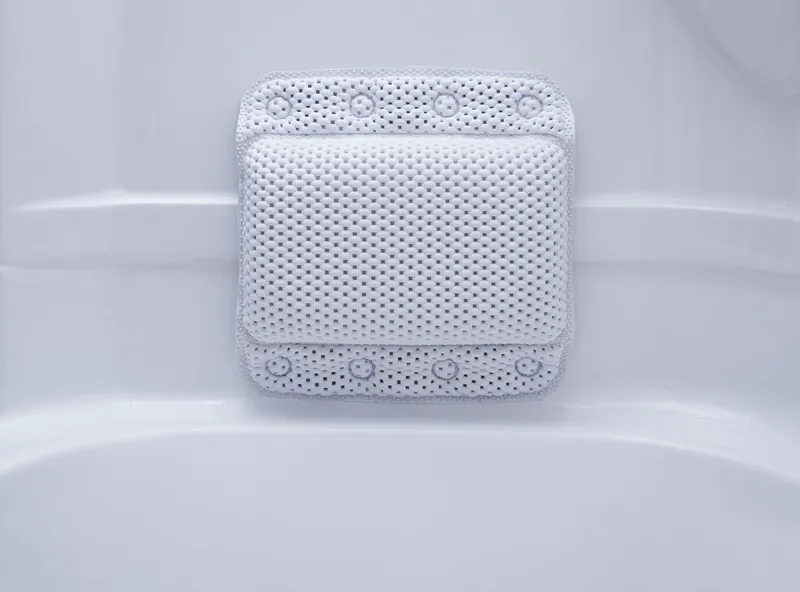
Bath cushions or pillows give your head, neck and shoulders comfort when soaking in the tub. They are made from waterproof material, usually with suction cups on the back so they stay in place against the porcelain without sliding.
Who suits a bath cushion?
Bath cushions are for anyone who loves bathing. But they are particularly beneficial if you struggle to sit up or have back pain and require something for comfort.
Pros of a bath cushion
- Instant use – You do not need to install a bath cushion but can use it immediately. Suction it onto the tub for a fast and comfortable bathroom aid.
- Great for neck support and relaxation – If you have someone who needs to lie down while washing in the tub or struggles with neck pain, a bath cushion works wonders.
- Come in different sizes – Aside from a bath pillow for the head, there are also bath cushions that extend down to the bottom of the tub to sit on. These are a fantastic option for additional support and comfort.
Cons of a bath cushion
- Can slip around – Bath cushions are designed to stay put. However, some can still slide down when you lean against them, especially if you have had them for a while. Avoid this problem by purchasing a good-quality bath pillow that will last.
- May not provide enough support – Even with a bath cushion, lying in the tub can still require strength to remain stable. However, there are bath blocks you can place at the bottom of the tub to shorten the bath length for additional support.
6. Grab Rails
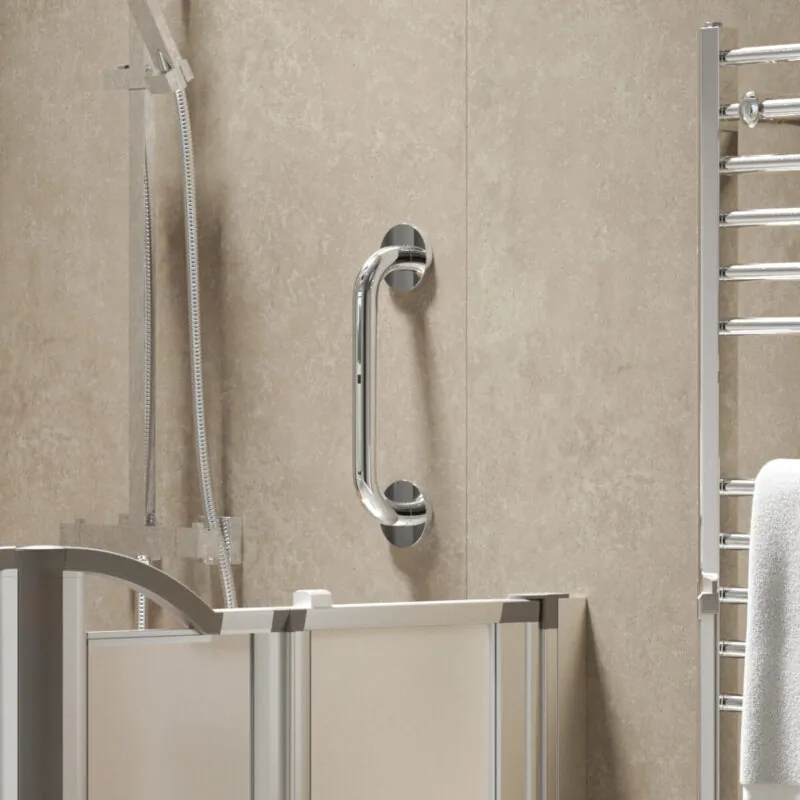
Grab rails give people who struggle with balance, joint pain or muscle weakness something to hold onto when pulling themselves up or lowering down. They are useful near toilets and in bathtubs due to the low facilities. They also make great bathroom aids in showers where the risk of slipping is higher.
Who suits a grab rail?
People who can move independently but need support will benefit from a grab rail. For example, someone with an injury that prevents them from putting weight on one of their legs. Or they may have muscle weakness and cannot lift themselves up properly. Grab rails are also suitable for anyone suffering from pain, as they don’t put as much pressure on your joints.
Pros of grab rails
-
- Great for small spaces – Grab rails are relatively small and fit onto walls, so they don’t use much space.
- Permanent or short-term – You have the option of installing a long-term grab rail using screws. Alternatively, a suction grab rail requires no installation, making it quick and portable.
Cons of a grab rail
- May not help limited mobility – If you need bathroom aids for someone with limited mobility, a grab rail may not provide enough support for them to move efficiently.
- Can require installation – Although you can get suction grab rails, some need proper installation into your walls, which is not ideal in a rented space.
7. Bath Seats and Boards
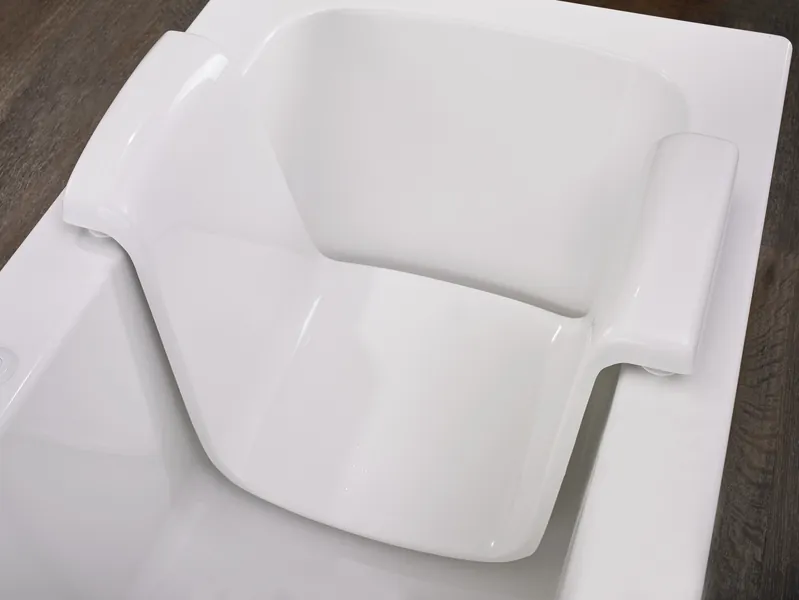
Bath boards lie across a tub, allowing the person to sit on them while washing. They can also be a halfway point for individuals to lower themselves into the bath. Bath seats suction onto the bottom of the bath for back support and stability.
Who suits a bath seat or board?
Bath boards suit individuals who require extra help lowering into the tub or who need a stable space to wash themselves while sitting. Bath seats are beneficial for anyone with back pain, as they give the spine support. They also make good bathroom aids for people who have low energy levels or muscle weakness that makes sitting in the bath tricky.
Choose the best bath aid with bathing solutions
Bathroom aids for the disabled or elderly are vital for safety and independent living. With various bathroom supports, including chairs, seats, grab rails and mats, you can enjoy bathing or showering with Bathing Solutions.
Bathing solution will be there to help with the complete mobility bathroom installation, more than purely the bathing unit but the entire bathroom to ensure it will fit your mobility needs.
You are also able to request any bespoke addition you want to the bathroom including the items above as part of your installation requirements.






